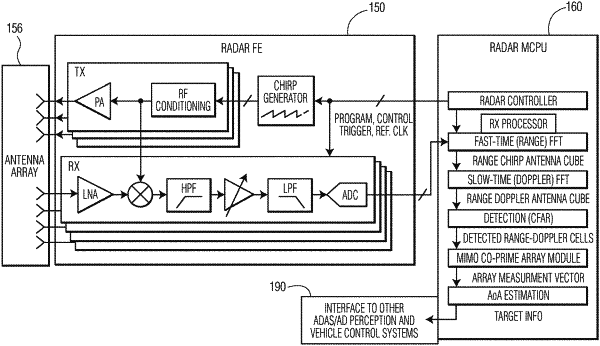| CPC G01S 13/04 (2013.01) [G01S 7/41 (2013.01); G01S 2013/0245 (2013.01)] | 19 Claims |

|
1. An apparatus comprising:
a radar circuit to receive reflection signals, in response to transmitted radar signals, as reflections from objects; and
computer processing circuitry with
a first module to process data corresponding to the reflection signals via a sparse array and, in response, to generate output data indicative of signal magnitude associated with the reflection signals, and
a second module to discern angle-of-arrival information for the output data by performing the following steps:
correlating the output data with at least one spatial frequency support vector indicative of a correlation peak for the output data,
generating upper-side and lower-side support vectors which are neighbors along a spatial frequency spectrum for said at least one spatial frequency support vector,
providing, via correlation of the upper-side and lower-side support vectors and said at least one spatial frequency support vector, at least one new vector that is more refined along the spatial frequency spectrum for said at least one spatial frequency support vector.
|